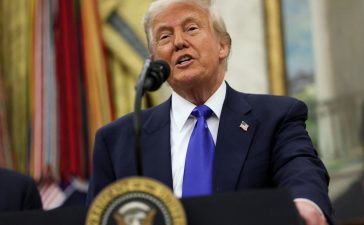
Corruption is defined as use of public office for private gain. But this definition leaves out corruption within businesses (e.g., insider trading). So, a more comprehensive definition is use of public resources by executives in both public and private sectors for private gain – without discounting the role of politicians.
Corruption has risen following globalisation, as natural resources have become more valuable, and regulatory agencies licensing their allocation more subservient to powerful business interests and public officials. There has been a spectacular spike in income and wealth inequality since 2014. Share of the top 1% in total income in 2022-23 is at its historical highest. The top 1% of income-earners made 22.6% of total pre-tax income, while the bottom half (50% of adults) earns only 15% of the total national income.
Ratio of the share of top 1% of earners to that of the bottom 50% in total income is the ‘[Thomas] Piketty measure’ of income inequality. This has risen. But our estimates of the ‘Piketty measure’ based on GWP surveys reveals a mixed pattern over 2019-23. It spiked in 2020, fell in 2021, rising in 2022, and falling in 2023.
Corruption, based on GWP surveys, shows a rise in its distinct but overlapping manifestations. These estimates are based on perceptions of respondents in these surveys. Respondents answering yes to whether corruption is widespread are added up to arrive at a measure of corruption. So, a statement that corruption has risen essentially means that a higher proportion of respondents perceive that corruption is more widespread.
Proportion of respondents who agree that corruption was widespread within businesses was high, rising from 77.7% in 2019 to 79% in 2023. Within government, it rose from 72.18% in 2019 to 75.05% in 2023. The intersection between government and businesses was not just high but rose from 65.15% in 2019 to 69.40% in 2023.So, was income inequality responsible for the rise in corruption? And was the judiciary effective in curbing it?Emphasising that it was fuelled by speculation in the financial and real estate markets, income inequality contributed significantly to corruption in all its manifestations, while a well-functioning judiciary was associated with a significant reduction. Benefits of education – both higher secondary and above – are unambiguous, as it’s associated with lower-income inequality but higher perception of corruption.
This is hardly surprising, as higher educational attainments expand remunerative employment opportunities and impart the ability to benefit from them. But the fact that they perceive higher corruption may be explained by their being better informed about insider trading, graft in government, bribery of public officials, lobbying by big businesses, etc.
Efficiency costs of corruption are severe – corruption decreases business activity, raises marginal costs of public funds and hampers growth. But the equity-efficiency trade-off of progressive taxation is often exaggerated. For example, when there is information asymmetry between a creditor and a borrower, the rich borrower may get the loan even when the project is less efficient than that of a borrower without collateral. Besides, in a federal structure such as India’s, Centre-state grants are driven more by political compulsions than by efficiency considerations.
In her latest budget, the FM missed the opportunity to raise taxes on the rich. Higher revenues would have enabled health and education reforms towards a more prosperous India, more aware and more antipathetic to corruption.









